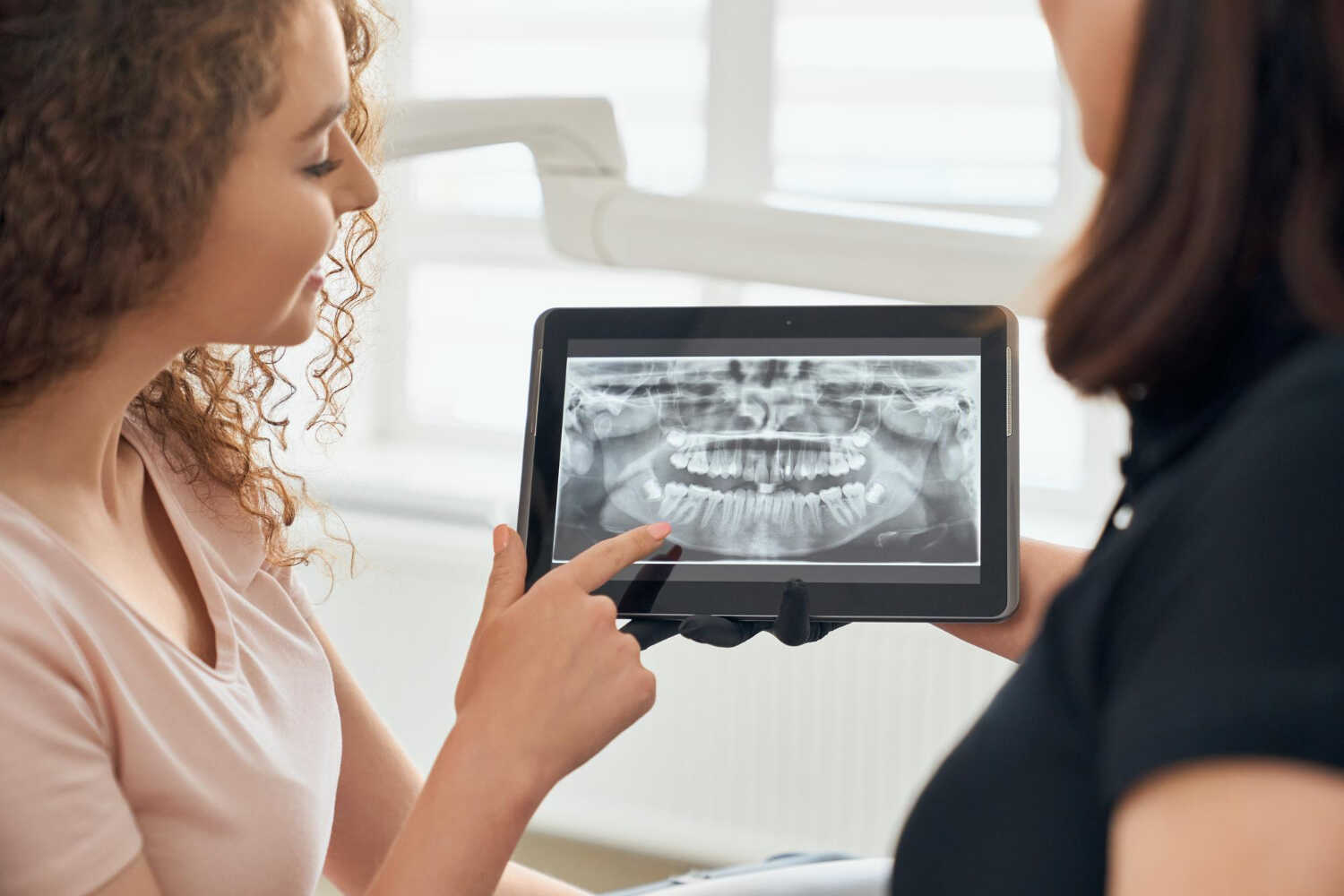WISDOM TEETH X-RAYS
Wisdom teeth X-rays are essential for determining the presence, positioning, and health of wisdom teeth. These X-rays give dentists and oral surgeons important information regarding teeth extraction. Dental specialists can examine the X-rays to identify the angle of eruption, the proximity to neighboring teeth, the general health of the teeth, the tissues around them, and whether the wisdom teeth are impacted.
TYPES OF WISDOM TEETH X-RAYS
Periapical X-ray:
Periapical X-ray gives a clear picture of just one tooth, from the crown to the root. It is frequently used to assess the shape and health of wisdom teeth, as well as any indications of decay or infection.
Panoramic X-ray:
An orthopantomogram (OPG), also referred to as a panoramic X-ray, provides a broad picture of the whole oral cavity, including the wisdom teeth. It gives a general picture of the teeth, jaws, and surrounding structures, assisting in determining the location, alignment, and growth of the wisdom teeth.
Bitewing X-ray:
Bitewing X-rays can reveal certain details regarding the placement and eruption of wisdom teeth. It is mostly used to find cavities in between teeth. These X-rays concentrate on the tooth crowns and capture the upper and lower teeth in a single image.
Cone Beam Computed Tomography (CBCT):
Cone Beam Computed Tomography (CBCT) is actually a 3-dimensional imaging method that creates incredibly accurate and detailed images of the oral and maxillofacial region. It is frequently used to determine how wisdom teeth that are partially or maybe fully erupted are situated and oriented, as well as how they interact with other tissues like nerves and sinuses.
Lateral Cephalogram:
A lateral cephalogram is an X-ray that shows the complete side view of the head, including the jaw and teeth. It can be useful in determining the wisdom teeth’s placement, angulation, and pattern of eruption, as well as how they relate to other facial features.
BENEFITS OF WISDOM TEETH X-RAY
The few benefits of wisdom teeth X-rays are given below;
Early Detection:
Before wisdom teeth fully erupt or exhibit any symptoms, dentists can detect their presence and position using X-rays. Through early detection, problems can be addressed before they become serious.
Identify Impaction:
Wisdom teeth can be obstructed from fully emerging owing to a lack of space. X-rays offer a clear image of the impacted teeth, enabling the dentist to assess the severity of the impaction and create an effective treatment strategy.
Examine Alignment:
Wisdom teeth can occasionally erupt at an angle or in a direction that affects the alignment of the teeth around them. With the aid of X-rays, dentists can examine the positioning of wisdom teeth and identify whether or not they could lead to crowding, shifting, or other dental issues.
Finding Cysts or Tumors:
Cysts or tumors that develop in wisdom teeth are rare, but they can hurt, infect, or harm adjacent structures. Using X-rays, dentists can identify the presence of such abnormalities and begin the necessary therapy or, if necessary, refer the patient to an oral surgeon.
Treatment Plans:
Wisdom teeth X-rays give precise details regarding the location, orientation, and health of the teeth. Dentists can use this information to create individualized treatment programs that may include suggestions for extraction, monitoring, or preventive treatments.
Patient Education:
X-rays offer visual proof that helps dentists clearly explain the problem to patients. Patients can make rational decisions regarding their oral health by viewing X-ray images and talking about the possible dangers or difficulties linked to wisdom teeth.
CONCLUSION
In short, wisdom teeth X-ray is an important diagnostic technique for determining the growth and positioning of the third molars, or wisdom teeth. Dentists and oral surgeons can use this kind of X-ray to get clear images that can help them determine whether a patient’s wisdom teeth are impacted, out of place, or otherwise pose a risk to their oral health. Dental practitioners can evaluate the X-ray data and determine whether wisdom teeth extraction is required in each case.





